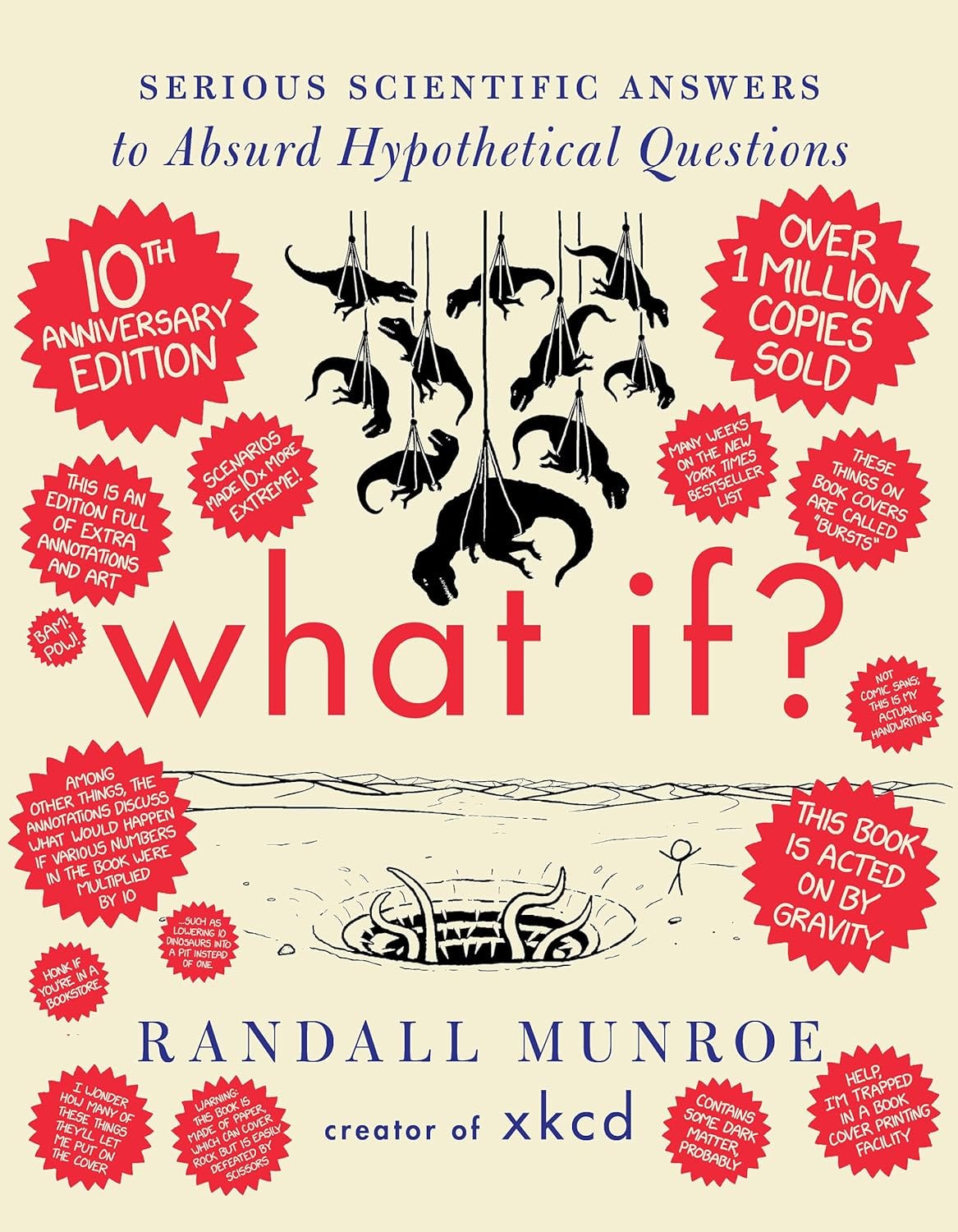Randall Munroe's What If? is a brilliant exploration of absurd hypothetical questions answered with rigorous scientific analysis. The creator of the popular webcomic xkcd applies real physics, chemistry, and mathematics to scenarios that range from the merely improbable to the gloriously catastrophic.
The book originated from Munroe's "What If?" blog, where he fielded outlandish questions from curious readers. These aren't your standard science queries—they're the kind that begin with phrases like "What would happen if..." and end with scenarios involving mole rats taking over the world or someone trying to hit a baseball pitched at 90% the speed of light.
Munroe's analysis of seemingly innocent questions frequently ends in apocalyptic scenarios. When addressing what would happen if you tried to collect a mole (the unit of measurement) of moles (the animal), he calculates this would involve approximately 6.02 × 10²³ moles, creating a mass greater than the moon that would collapse into a molten, self-gravitating sphere, obliterating much of the Earth in the process.
The book shines through Munroe's distinctive stick-figure illustrations, which manage to clarify complex concepts while introducing humorous asides. He brings particular delight to questions involving radiation, often concluding with variations of "...and then everyone dies." When someone asks about swimming in a spent nuclear fuel pool, he explains that you could safely swim at the surface (the water provides excellent radiation shielding), but diving too close to the fuel rods would deliver a lethal dose of radiation in seconds. He helpfully notes that "you wouldn't actually feel any warmth from the radiation itself, in the same way that you don't feel the sunburn until later that night."
Throughout the book, Munroe's footnotes are treasure troves of scientific tangents and self-deprecating humor. What If? excels at making complex scientific principles accessible through scenarios readers can visualize, however outlandish. When explaining the concept of half-life through a question about a radioactive material's continued danger, Munroe helps readers understand exponential decay in practical terms that basic textbooks rarely achieve.
Perhaps most impressively, Munroe knows when to abandon pure scientific analysis for common sense. When asked how to cook a 30-foot pizza, after discussing heat transfer coefficients and thermal conductivity, he concludes: "But really, the answer is: Don't make a 30-foot pizza."
For anyone who's ever wondered whether you could build a jetpack using downward-firing machine guns or what would happen if the Earth suddenly stopped spinning (spoiler: nothing good), What If? provides scientifically sound answers wrapped in wit, charm, and frequent reminders of how fragile human existence truly is.
Get the book : USA | India | UK
If you like this book, you can also check out its sequel What If? 2
Check out the previous books we’ve covered:
From Third World to First | How the World Really Works | Genghis Khan and the Making of the Modern World | Meditations | When Breath Becomes Air | Alchemy | Siddhartha | The Design of Everyday Things | A Short History of Nearly Everything | The Inevitable | Chip War | Same As Ever


